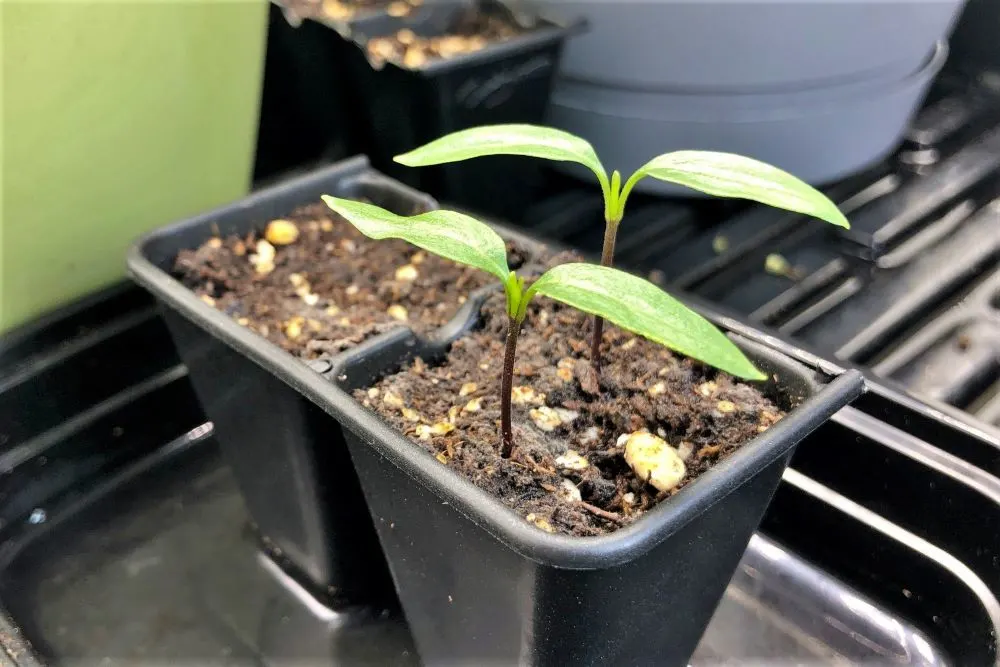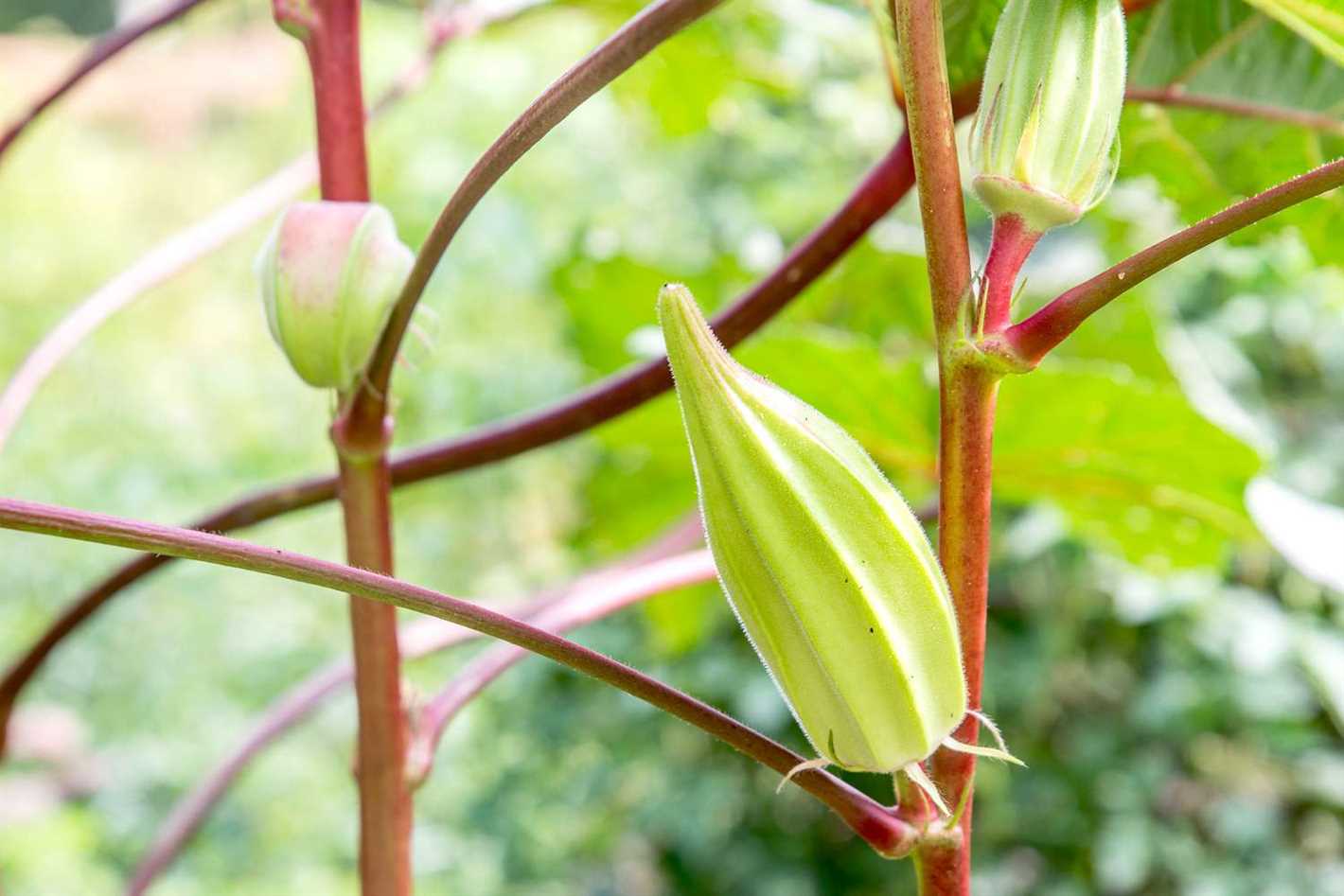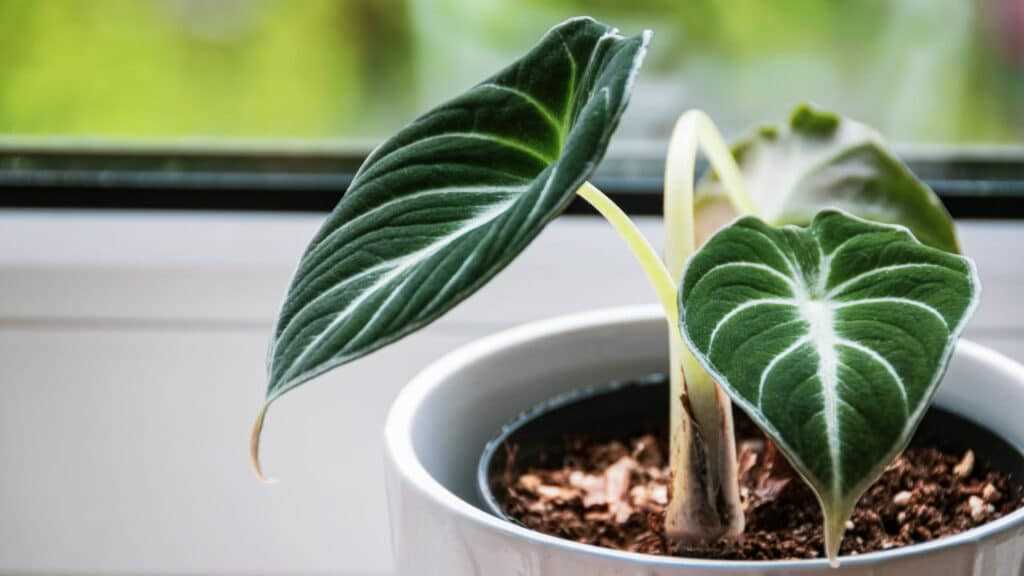- What are Velvet Seedlings?
- Characteristics of Velvet Seedlings:
- Benefits of Growing Velvet Seedlings:
- The Importance of Sowing Velvet Seedlings
- Sowing Tips
- 1. Step-by-Step Instructions:
- 2. Tips for Sowing Success:
- Choosing the Right Location
- Preparing the Soil
- Choose a Well-Draining Soil
- Amend the Soil with Organic Matter
- Remove Weeds and Debris
- Test the Soil pH
- Loosen the Soil
- Planting Velvet Seeds
- 1. Choosing the Seeds
- 2. Preparing the Soil
- 3. Sowing the Seeds
- 4. Watering
- 5. Providing Sunlight
- 6. Fertilizing
- 7. Mulching
- Care Tips
- Watering and Moisture Control
- Watering Techniques
- Moisture Control
- Providing Proper Sunlight
- Pruning and Training
- Questions and Answers:
- Can I grow velvet seedlings indoors?
- What is the best time to sow velvet seeds?
- How deep should I plant velvet seeds?
- How often should I water velvet seedlings?
- Do velvet seedlings require fertilization?
- Can I transplant velvet seedlings into a larger pot?
- How long does it take for velvet seedlings to grow into mature plants?
- Videos: THE FASTEST WAY TO GROW OKRA NOBODY TALKS ABOUT
Growing velvet seedlings is a rewarding and enjoyable experience. These beautiful plants, also known as velvet plants or Chinese money plants, have soft, velvety leaves that add a touch of elegance to any indoor space. Whether you’re a beginner gardener or a seasoned pro, learning how to sow and care for velvet seedlings is essential for their successful growth.
When it comes to sowing velvet seedlings, it’s important to start with high-quality seeds. You can purchase them from a reputable nursery or online store. Before sowing, soak the seeds in warm water for a few hours to enhance germination. After soaking, place the seeds in a seed tray or small pots filled with well-draining potting mix. Gently press the seeds into the soil, but do not bury them too deep.
Next, place the seed tray or pots in a warm and bright location, such as a sunny windowsill. The ideal temperature for germination is around 70-75°F (21-24°C). Keep the soil moist but not soggy by watering from the bottom or using a misting bottle to avoid disturbing the seeds. Within two to three weeks, you should start seeing tiny velvet seedlings emerging from the soil.
Once the seedlings have sprouted, it’s important to provide them with proper care to ensure healthy growth. Place them in a location with bright, indirect light to prevent sunburn on their delicate leaves. Keep the temperature around 65-75°F (18-24°C) and maintain a consistent level of humidity by misting the plants regularly.
Water the seedlings when the top inch of soil feels dry, but be careful not to overwater as this can lead to root rot. Use a well-draining potting mix and ensure that the pots have drainage holes to prevent waterlogging. Fertilize the seedlings every two weeks with a balanced liquid fertilizer, following the package instructions for proper dosage.
As the velvet seedlings grow, you may need to repot them into larger containers to accommodate their increasing size. Choose pots with good drainage and use a well-draining potting mix. Gently remove the seedlings from their current pots, taking care not to damage their delicate roots. Place them in the new pots and backfill with soil, ensuring that the plants are at the same level as before. Water thoroughly and continue to provide the proper care mentioned above.
By following these sowing and care tips, you’ll be able to grow healthy and thriving velvet seedlings. With their soft and velvety leaves, these plants will add a touch of natural beauty to your indoor space. Enjoy the process of watching them grow and create a soothing and calming atmosphere in your home.
What are Velvet Seedlings?
Velvet seedlings, also known as Gynura aurantiaca, are popular houseplants that are native to Indonesia. They are named for their velvety leaves, which have a soft and fuzzy texture. Velvet seedlings are prized for their vibrant orange or purple-colored leaves, which can add a pop of color to any indoor space.
These plants are relatively easy to care for and can be grown both outdoors and indoors. However, they are typically grown as houseplants due to their sensitivity to cold temperatures.
Characteristics of Velvet Seedlings:
Velvet seedlings have elongated leaves that are often lobed or toothed. The leaves can range in size from 1 to 3 inches wide and 3 to 6 inches long.
The leaves of velvet seedlings are covered in fine hairs, giving them their soft and velvety texture.
The color of the leaves can vary depending on the cultivar. Some velvet seedlings have bright orange leaves, while others have deep purple leaves.
When grown outdoors, velvet seedlings produce small, yellow flowers that resemble daisies. However, these flowers are not typically a prominent feature of the plant.
Velvet seedlings can grow up to 2 feet tall and 1 foot wide, making them a relatively compact plant that is well-suited for indoor spaces.
Benefits of Growing Velvet Seedlings:

In addition to adding beauty to your indoor space, velvet seedlings offer several benefits to gardeners. Some of these benefits include:
Air purification: Velvet seedlings have been found to remove toxins such as formaldehyde, benzene, and xylene from the air, helping to improve indoor air quality.
Stress relief: The soft and velvety leaves of velvet seedlings can have a calming effect, making them an ideal plant for promoting relaxation and reducing stress.
Low maintenance: Velvet seedlings are relatively easy to care for and can tolerate a wide range of growing conditions. They can thrive in low light conditions and do not require frequent watering.
Compact size: The compact size of velvet seedlings makes them perfect for small spaces, such as apartments or offices. They can be grown in pots or hanging baskets, allowing for versatile placement options.
Overall, velvet seedlings are a popular choice among indoor plant enthusiasts due to their unique appearance, ease of care, and potential health benefits. Whether you are a new plant parent or an experienced gardener, growing velvet seedlings can be a rewarding experience.
The Importance of Sowing Velvet Seedlings
Growing velvet seedlings is an essential step in cultivating beautiful and healthy velvet plants. Sowing the seedlings allows you to control the growing conditions and ensure the success of your garden. Here are a few reasons why sowing velvet seedlings is important:
- Greater control over the growing process: Sowing seedlings gives you the opportunity to have full control over the growing conditions, such as temperature, moisture, and light. This allows you to create the optimal environment for your velvet plants to thrive.
- Higher success rate: By sowing seedlings, you have a higher chance of success compared to planting seeds directly into the ground. Seedlings are more resistant to pests and diseases and have a better chance of survival.
- Timing: Sowing seedlings allows you to start the growing process earlier in the year, giving your velvet plants a head start. This is especially important in regions with short growing seasons.
- Uniformity: When you sow velvet seedlings, you can ensure a more uniform growth. Seedlings grow at a similar rate, resulting in a more consistent and aesthetically pleasing garden.
Sowing velvet seedlings not only provides you with more control and a higher success rate but also allows you to enjoy the process of watching your plants grow from tiny seedlings to beautiful velvet plants. With proper care and attention, your velvet seedlings will develop into stunning additions to your garden.
Sowing Tips
Velvet seedlings can be easily grown from seeds at home, and with a few sowing tips, you can ensure their successful growth and development.
1. Step-by-Step Instructions:
- Start by preparing a seed tray or small pots with well-draining potting soil.
- Moisten the soil with water to create a damp but not saturated environment for the seeds.
- Sow the velvet seeds on the surface of the soil, following the recommended spacing instructions provided on the seed packet.
- Gently press the seeds into the soil or cover them lightly with a thin layer of soil, depending on the recommended sowing depth.
- Place a clear plastic cover over the seed tray or pots to create a greenhouse-like environment that will help retain moisture and warmth.
- Position the seed tray or pots in a warm area with indirect sunlight or under grow lights.
- Keep the soil consistently moist but not waterlogged by misting it with water or using a spray bottle.
- Germination of velvet seeds usually takes around 7 to 14 days.
2. Tips for Sowing Success:

- For better germination rates, it is recommended to scarify the velvet seeds by lightly scratching or nicking the hard outer layer before sowing.
- Soaking the seeds in lukewarm water overnight can also help speed up germination.
- Ensure good air circulation around the seed tray or pots to prevent the growth of mold or fungus.
- Once the seedlings have developed true leaves, transplant them into individual pots or a larger container with well-draining soil.
- Gradually acclimate the seedlings to outdoor conditions before transplanting them into the garden, exposing them to increasing amounts of sunlight and outdoor temperatures over a period of several days.
By following these sowing tips, you can successfully grow velvet seedlings from seeds and enjoy the beautiful and velvety blooms of this stunning plant.
Choosing the Right Location
When it comes to growing velvet seedlings, choosing the right location is crucial for their success. Here are some factors to consider:
- Sunlight: Velvet plants thrive in bright, indirect sunlight. Choose a location that receives 4-6 hours of sunlight per day, preferably in the morning or late afternoon.
- Temperature: Velvet seedlings prefer warm temperatures between 65-75°F (18-24°C). Avoid placing them near drafts or in areas prone to extreme temperature fluctuations.
- Humidity: Velvet plants enjoy high humidity levels. If your home is dry, consider placing the seedlings in a humid area or using a humidifier to create the ideal conditions.
- Air Circulation: Good air circulation is essential to prevent the buildup of moisture and reduce the risk of diseases. Avoid placing the seedlings in closed-off or stagnant areas.
It’s also important to note that velvet seedlings can be sensitive to sudden changes in their environment. Therefore, choose a location where the conditions are relatively stable and avoid moving the plants excessively.
Preparing the Soil
Before sowing velvet seedlings, it is important to prepare the soil properly. The right soil conditions will provide a suitable environment for the seeds to germinate and grow into healthy plants. Here are some steps to follow when preparing the soil:
Choose a Well-Draining Soil
Velvet seedlings prefer well-draining soil to prevent waterlogging, which can rot the roots. Use a soil mix that contains equal parts of sand, perlite, and peat moss to ensure good drainage.
Amend the Soil with Organic Matter
Incorporate organic matter such as compost or well-rotted manure into the soil. This will improve the soil structure, fertility, and moisture-retention capacity.
Remove Weeds and Debris
Before sowing the seeds, remove any weeds, rocks, or debris from the planting area. This will prevent competition for nutrients and space, allowing the velvet seedlings to thrive.
Test the Soil pH
Velvet seedlings prefer slightly acidic soil with a pH range of 6.0 to 6.5. Use a soil testing kit to check the pH level and adjust it if necessary by adding lime to raise the pH or sulfur to lower it.
Loosen the Soil
Loosen the soil by using a garden fork or tiller. This will help to improve aeration and allow the roots to penetrate easily into the soil.
By following these steps to prepare the soil, you can create an optimal growing environment for your velvet seedlings. This will give them the best chance of germinating successfully and growing into healthy plants. Remember to provide adequate water and sunlight to your seedlings as they continue to grow.
Planting Velvet Seeds
1. Choosing the Seeds

When planting velvet seeds, it is important to choose high-quality seeds to ensure successful germination and healthy plant growth. Look for seeds that are plump, firm, and free from any signs of damage or disease.
2. Preparing the Soil
Velvet plants prefer well-draining soil that is rich in organic matter. Before planting the seeds, prepare the soil by loosening it with a garden fork or tiller. Remove any weeds or large rocks, and mix in compost or aged manure to improve the soil’s fertility.
3. Sowing the Seeds
There are two main methods for sowing velvet seeds: direct sowing and starting indoors.
- Direct Sowing: If you live in a region with a long growing season, you can directly sow the seeds into the prepared soil after the last frost date. Space the seeds according to the recommended spacing for the specific variety, and cover them with a thin layer of soil.
- Starting Indoors: If you have a short growing season or want to get a head start on the growing season, you can start velvet seeds indoors. Fill seed trays or containers with seed-starting mix, and sow the seeds according to the recommended spacing. Keep the soil moist and warm, and once the seedlings have developed a few sets of leaves, they can be transplanted outdoors.
4. Watering

Keep the soil consistently moist but not waterlogged while the velvet seeds are germinating and establishing roots. Once the seedlings are established, water them deeply once or twice a week, depending on the weather conditions. Avoid overwatering, as this can cause root rot and other issues.
5. Providing Sunlight
Velvet plants thrive in full sun to partial shade. Choose a location that receives at least 6 hours of direct sunlight per day. If planting in a sunny area, provide some afternoon shade to protect the plants from excessive heat.
6. Fertilizing
After the velvet seedlings have developed a few sets of leaves, you can begin fertilizing them. Use a balanced, water-soluble fertilizer according to the package instructions. Apply the fertilizer every 2-4 weeks to promote healthy growth and blooming.
7. Mulching
Apply a layer of organic mulch around the base of the velvet plants to help retain moisture, suppress weeds, and regulate soil temperature. Use materials like wood chips, straw, or compost, and apply the mulch to a thickness of 2-3 inches.
Care Tips
- Watering: Velvet seedlings require consistent and adequate watering. Keep the soil moist, but not waterlogged. Water the plants thoroughly whenever the top inch of soil feels dry, ensuring that the excess water drains out.
- Sunlight: Place the velvet seedlings in a location where they receive bright, indirect sunlight for at least 6-8 hours a day. Avoid placing them in direct sunlight, as it can scorch the delicate foliage.
- Temperature: Velvet plants prefer temperatures between 65-75°F (18-24°C). Avoid extreme temperature fluctuations and keep the plants away from drafts or cold windowsills.
- Fertilizing: Feed the velvet seedlings with a balanced, water-soluble fertilizer once a month during the growing season. Dilute the fertilizer according to the package instructions and apply it to the soil around the plants.
- Pruning: To encourage bushy growth, pinch back the tips of the velvet seedlings when they reach about 4-6 inches in height. This will promote branching and result in a fuller, more compact plant.
- Pest Control: Keep a watchful eye for common pests such as aphids, mealybugs, and spider mites. If you notice any infestations, treat them with insecticidal soap or neem oil, following the product instructions carefully.
- Transplanting: When the velvet seedlings outgrow their containers, you can transplant them into larger pots. Use a well-draining potting mix and ensure that the new container has adequate drainage holes.
- Support: As the velvet plants grow, provide support with stakes or trellises if necessary. This will help them remain upright and prevent the delicate stems from bending or breaking.
- Winter Care: In regions with cold winters, bring the velvet plants indoors before the first frost. Place them in a warm, well-lit area away from drafts. Reduce watering during the dormant period, allowing the soil to dry out slightly between waterings.
- Propagation: If you want to propagate more velvet plants, you can take stem cuttings from well-established plants. Remove a 3-4 inch long cutting, remove the lower leaves, and dip the cut end in rooting hormone. Plant the cutting in a small pot with moist potting soil and place it in a warm, humid environment until roots form.
Watering and Moisture Control
Watering is an essential aspect of growing velvet seedlings. Proper watering techniques help maintain the correct moisture levels, ensuring healthy growth.
Watering Techniques

Here are some tips for watering your velvet seedlings:
- Water the seedlings consistently, keeping the soil evenly moist but not waterlogged.
- Avoid overwatering, as it can lead to root rot and other fungal diseases.
- Water the plants from the base, avoiding wetting the leaves excessively.
- Use a fine spray nozzle or a watering can with a narrow spout to provide a gentle stream of water.
- Water in the morning or early afternoon to allow the foliage to dry before nightfall, reducing the risk of fungal diseases.
Moisture Control
Apart from watering, it is important to control moisture levels in the growing environment:
- Monitor the humidity levels, aiming for a range of 40-60%.
- Provide adequate ventilation to prevent excessive humidity and reduce the risk of fungal growth.
- Avoid overcrowding the seedlings, as it can lead to poor air circulation and increased moisture levels.
- Consider using a humidity tray or placing a saucer filled with water near the plants to increase moisture levels if necessary.
By following the proper watering techniques and controlling moisture levels, you can promote healthy growth and minimize the risk of disease in your velvet seedlings.
Providing Proper Sunlight
Velvet seedlings require optimal sunlight conditions to grow properly. Here are some tips on providing the right amount of sunlight for your seedlings:
- Choose a sunny spot: Find a location that receives at least 6-8 hours of direct sunlight per day. This will ensure that your velvet seedlings get enough light to thrive and develop.
- Avoid intense midday sunlight: While the seedlings need sunlight, it is important to protect them from intense midday sun. This can be achieved by placing them in a spot where they get morning or afternoon sunlight, or by providing light shade during the hottest part of the day.
- Use reflective surfaces: Maximise the amount of sunlight reaching your velvet seedlings by placing reflective surfaces, such as white boards or mirrors, around them. This will help redirect and amplify the sunlight, ensuring that the plants receive even more light.
- Rotate the seedlings: If your velvet seedlings are growing indoors or in a greenhouse, make sure to rotate them regularly. This will ensure that all sides of the seedlings receive an equal amount of sunlight, promoting even growth.
By providing the proper amount of sunlight, you will help your velvet seedlings to thrive and grow into healthy plants. Always monitor the light conditions and make adjustments as needed to ensure the best possible environment for your seedlings.
Pruning and Training
Pruning and training your velvet seedlings is essential for maintaining their health and encouraging proper growth. Here are some tips to help you prune and train your plants effectively:
- Remove overcrowded seedlings: As your seedlings grow, it’s important to thin them out to prevent overcrowding. This will give each plant enough space to develop properly. Carefully remove the weakest seedlings, leaving the strongest ones to thrive.
- Pinch the tips: Pinching the tips of your velvet seedlings will encourage branching and promote a bushier, more compact growth habit. You can do this by simply using your fingers to pinch off the growing tip of each stem, removing about 1/4 to 1/2 inch of growth.
- Train for support: Velvet seedlings tend to have weak and floppy stems, so it’s important to provide support as they grow. You can use small stakes or plant supports to gently guide the stems and prevent them from bending or breaking. Secure the stems to the support using soft twine or plant clips.
- Remove dead or diseased leaves: Regularly inspect your velvet seedlings and remove any dead or diseased leaves. These can attract pests and diseases, and may hinder the growth of your plants. Use clean pruning shears to carefully cut away the affected leaves, making sure not to damage the healthy foliage.
- Prune for shape: As your velvet seedlings grow, you may need to prune them to maintain a desired shape. Use clean pruning shears to carefully trim back any unruly or overgrown stems. Aim to create a balanced and attractive overall form.
- Fertilize after pruning: After pruning your velvet seedlings, it’s a good idea to give them a boost of nutrients. Use a balanced fertilizer, following the manufacturer’s instructions for application rates. This will help replenish the nutrients that were lost during the pruning process and support healthy growth.
By implementing these pruning and training techniques, you can ensure that your velvet seedlings grow into strong and well-shaped plants. Remember to handle your seedlings with care during the pruning process to avoid any damage. Happy gardening!
Questions and Answers:
Can I grow velvet seedlings indoors?
Yes, velvet seedlings can be grown indoors. They require a sunny location and well-draining soil.
What is the best time to sow velvet seeds?
The best time to sow velvet seeds is in the spring when the soil temperature reaches around 60°F (15°C).
How deep should I plant velvet seeds?
Velvet seeds should be sown at a depth of about 1/4 inch (6 mm) in the soil.
How often should I water velvet seedlings?
Velvet seedlings should be watered regularly, keeping the soil moist but not waterlogged. Watering once or twice a week is usually sufficient.
Do velvet seedlings require fertilization?
Yes, velvet seedlings can benefit from regular fertilization. Use a balanced fertilizer every two weeks during the growing season.
Can I transplant velvet seedlings into a larger pot?
Yes, velvet seedlings can be transplanted into a larger pot once they have grown a few inches tall and have developed a strong root system.
How long does it take for velvet seedlings to grow into mature plants?
It usually takes about 6-8 weeks for velvet seedlings to grow into mature plants, depending on growing conditions and care.







